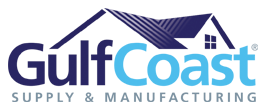
For hundreds of years, metal has been the preferred roofing material for agricultural and industrial buildings. Today, homeowners are increasingly turning to one metal roof design in particular — standing seam — for greater energy efficiency and a contemporary look.
The standing seam, or hidden screw, construction also provides longevity and durability that has become synonymous with metal roofs for houses. Standing seam roofs are constructed with interlocking metal panels. The seams create a seal that protects from the ravages of weather and other environmental elements.
Homeowners considering metal roofs often have questions about the advantages of the standing seam, including:
How are standing seam metal panels joined and fastened?
Installation of a standing seam roof often depends on several factors, including how the panels are manufactured. In general, metal panels are joined using portable seamer equipment, seamer caps that snap or slide in place or integrated locking systems. A system of fasteners, nails or screws is used to secure the roof onto a plywood substrate roof deck, based on the manufacturer’s recommendations.
What is the minimum slope for standing seam metal roofs?
At Gulf Coast Supply & Manufacturing, standing seam metal roofing panels are designed to be installed on slopes of 3:12 (3 inches of vertical rise/drop for every 12 inches of horizontal run) or greater. They can be installed on lower slopes per manufacturer directions.
What gauge metal roofing is used for private residences?
Roofing metal thickness is described by gauge, ranging from 22 gauge (thickest) to 29 gauge (thinnest). For residential structures, Gulf Coast Supply’s leading products, including GulfLok™, are available in 26 and 24 gauge steel. Gulf Coast Supply’s popular OceanGuard™ series, which is best for coastal applications, is available in 0.032 and 0.040 aluminum.
What are the advantages of a standing seam metal roof?
When installed properly, standing seam protects against water and wind intrusion, which will ultimately preserve the home’s integrity. Other benefits of standing seam and metal roofs include:
- Durability — Unlike other roofing materials, standing seam roofs use 26- or 24-gauge metal which does not crack or corrode. Many standing seam roofs can withstand winds up to 140 mph and can last 50 or more years. They quickly shed ice, snow and rain. Metal roofs are also generally fire-resistant, which is helpful for homes built in wildfire-prone locations.
- Curb appeal — The simple lines and clean design of the standing seam roofs work across a spectrum of home styles, including farmhouse, contemporary, colonial, ranch and modern.
- Low maintenance — Standing seam roofs need little maintenance because seams are weather-resistant and the fasteners are protected from the elements. Standing seam roofs should be inspected periodically, especially before or after severe weather events.
- Reduced environmental impact — Metal roofs have been designated by the U.S. Department of Environmental Protection (EPA) as “cool roofs” because they reflect sunlight and radiant heat. Cool roofs reduce energy usage, air pollution and greenhouse gas emissions. Metal roofs are also made from recycled content and are recyclable.
- Cost effectiveness — While the initial financial outlay for a standing seam metal roof may be more than for other types of roofing, the overall usage cost per year is less. Writer Eric Baldwin of Architizer, an online journal for architects, said the benefits outweigh the cost:
“When considering the cost of standing seam versus other roof systems, understand the implications of exposed screws, maintenance over time and how well a roof keeps water out,” he said.
Ready to invest in a metal roof? Check out Gulf Coast Supply & Manufacturing’s Proof My Roof Color Visualizer, which lets users experiment with various styles and colors.
